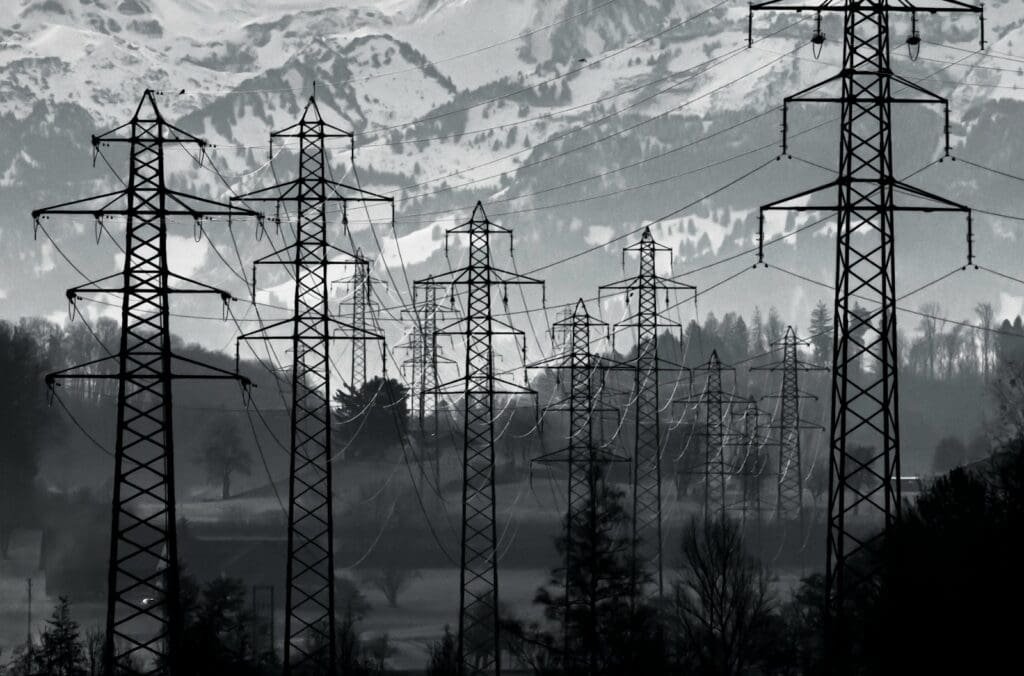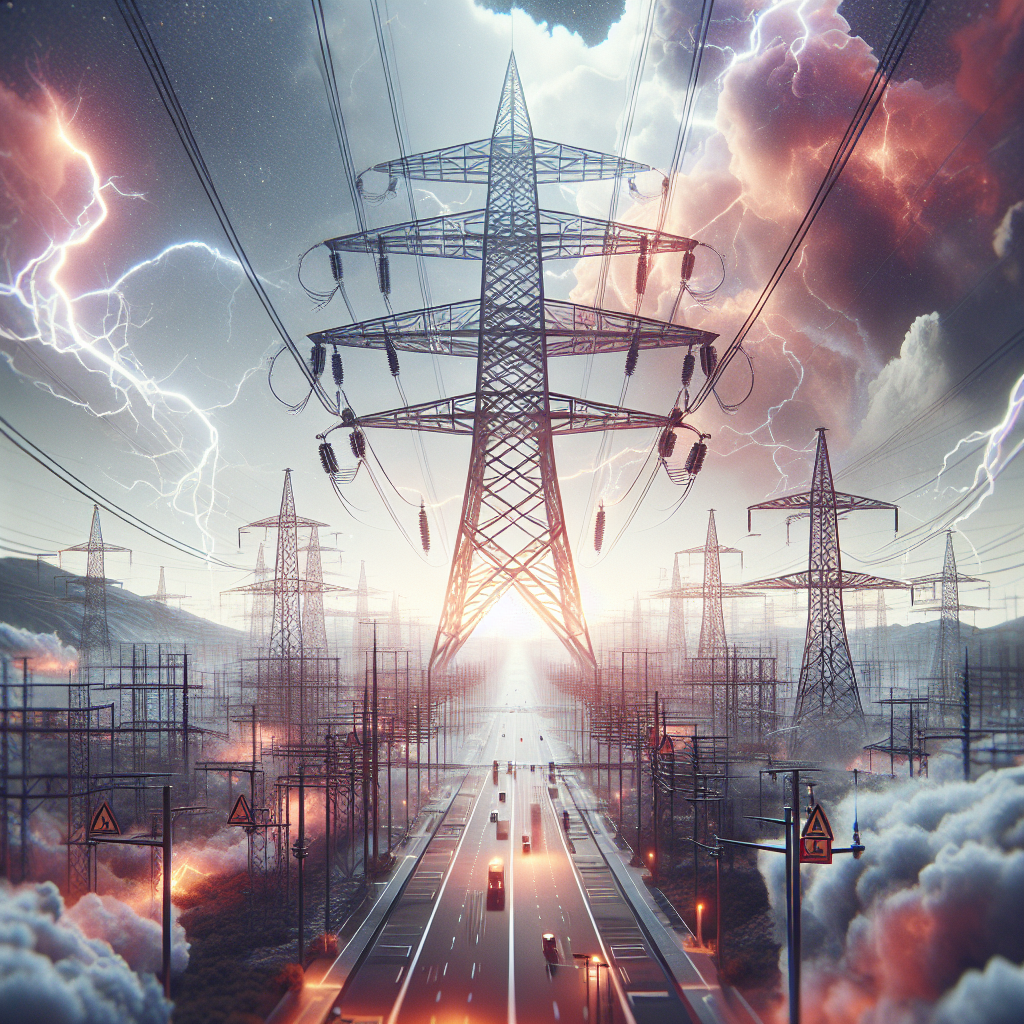Understanding Ultra High Voltage in Construction: An Intro
Ever wondered how electricity travels miles to power your homes, offices, or factories? The answer lies in Ultra High Voltage (UHV) transmission. It’s the science and technology that allows power grids to transmit electricity efficiently over vast distances.
In this article, we break down the concept of UHV, its importance, and practical benefits in construction. We’ll also explore real-world examples of UHV usage, safety guidelines, and environmental considerations. Finally, we will dive into the challenges and best practices when implementing UHV technology in various construction projects.
Is UHV the key to a more efficient and sustainable energy future? Let’s find out!
Table of Contents
Breaking Down Ultra High Voltage in Construction

Definition of Ultra High Voltage
An important term that is often thrown around in construction circles, but not readily understood, is ultra high voltage. To clarify, ultra high voltage (UHV) refers to electric power transmission with the potential to exceed 800,000 volts (800 kV). The term is utilized in the electricity field, especially when dealing with power grids, substations, and long distance electrical transmissions.
Why Ultra High Voltage is Important
Imagine you’re constructing a new commercial building, and you’re considering power demands. The importance of understanding ultra high voltage becomes paramount as it’s a key factor in ensuring an effective and efficient power transmission system.
The Practical Benefits of Ultra High Voltage
A few concrete benefits of ultra high voltage include:
- Reduced losses in electricity transmission
- Increased transmission capacity
- Lower land usage with fewer transmission lines
Understanding these benefits can help prioritize the requirements during the construction process.
Examples of Ultra High Voltage Usage
UHV is not only theory. Let’s check out some real-world examples:
The UHV Transmission Network in China
One of the most renowned examples of Ultra High Voltage usage is found in China. Their massive investments in UHV technology have led the way in efficient electricity transmission over long distances, reducing transmission losses significantly.
The Power Grid of India
India’s power grid is also investing heavily in Ultra High Voltage lines, playing a key role in the interconnection of regional grids and enabling electricity supply to more remote areas.
The Safety Aspects Of Ultra High Voltage
Safety is, of course, a huge concern when it comes to dealing with ultra high voltage. Special precautions and safeguards must be taken to prevent any accidents or disruptions. This includes incorporating various safety measures such as:
- The use of adequate insulation
- Proper grounding
- Constant monitoring of voltage levels
Understanding and adhering to these safety instructions is a must in any construction project dealing with UHV systems.
Looking Deeper into Ultra High Voltage Technology

Factors affecting UHV technology
Whenever ultra-high-voltage technology is integrated into a construction project, a number of factors come into play which determine its effectiveness.
Environmental Effects
The environmental impact of UHV technology must be considered. This includes the potential effect of electromagnetic fields on both humans and the larger ecosystem. Regulations, guidelines, and best practices ought to be followed to maintain a negligible impact on the environment.
Technology and Infrastructure
Successful implementation of UHV technology depends heavily on the existing infrastructure. Upgrading systems, robust construction of transmission lines, and advanced control systems are all aspects that need a sizable investment.
The Evolution of Ultra High Voltage Technology
Ultra high voltage technology has come a long way. Owing to its ability to transmit large quantities of power over long distances, it has played a significant role in the evolution of power systems globally.
Impact on Renewable Energy
Increasingly, UHV technology is being viewed as a key component to support the shift towards renewable energy sources. For instance, the capability to transport wind power from remote locations to cities is enabled by UHV lines, facilitating a more sustainable energy system.
Limitations of Ultra High Voltage
While there are numerous benefits associated with UHV, it also presents some challenges that need to be managed.
Technological Challenges
The high voltage levels associated with UHV demand special types of electrical equipment, such as circuit breakers and transformers. Finding or developing this technology can be a significant task.
Operational Challenges
Another area of challenge in implementing UHV technology pertains to operating power grids under such high voltage conditions. The complexity lies in maintaining stability, ensuring proper load dispatch, and preventing voltage drops or spikes.
Best Practices for Implementation
For the effective use of ultra high voltage technology in construction, adherence to best practices is critical.
- Developing a comprehensive planning strategy for the project that factors in all aspects of UHV implementation
- Ensuring that all safety measures are strictly adhered to
- Collaboration with power grid operators for efficient usage and maintenance of the system
- Continuous learning and development in terms of technological innovation and safety measures
Awareness of these factors will aid in the successful deployment of ultra high voltage technology in construction projects.
Distinguishing Aspects of Ultra High Voltage in Construction

Specific Characteristics of Ultra High Voltage
Ultra high voltage (UHV) is a term integral to the power transmission field. Apart from the grandiose figure of being able to carry more than 800 kV, UHV brings along a set of specific characteristics, distinguishing it from usual voltage levels.
Higher Power Density
UHV transmission allows for a higher power density, meaning it can transfer larger amounts of power through a single transmission line. This feature reduces the need for parallel or multiple transmission lines, therefore saving costs and real estate.
Extended Transmission Distance
One of the crucial elements of UHV is its ability to transmit electricity over longer distances without appreciable power losses. Due to its increased voltage level, UHV is less susceptible to resistance-related power losses, allowing energy to travel farther.
The Significance of Capacitive and Inductive Load in UHV
In any electrical system, capacitive and inductive loads play an important role, and UHV is no exception.
Inductive Load Impact
Inductive load refers to the consumption of reactive power. A high amount of inductive load can cause voltage instability in the system. However, UHV shows an extremely high power capability, making it less sensitive to large inductive loads.
Capacitive Load Impact
Capacitive load creates reactive power, and can lead to excessively high voltages in the system. UHV systems often require measures like shunt reactors to absorb the excessive reactive power and control the voltage level.
The Regulatory Framework for Ultra High Voltage
Given the potential impacts of UHV on the environment and surrounding community, its implementation and operation are governed by multiple regulations.
Authorities Regulating UHV
Several national and international authorities exert regulatory control over the use of UHV technology. For example, in the United States, the Federal Energy Regulatory Commission (FERC) and the North American Electric Reliability Corporation (NERC) play significant roles.
Key Regulations
Primary regulations that typically apply to UHV include rules on electromagnetic fields, power transmission, safety standards, noise levels, etc. These strict guidelines are intended to protect workers and the general public from any potential health or safety hazards.
Ultra High Voltage in Future Energy Perspectives
With the ongoing advancements in energy production methods, UHV has emerged as a crucial technology, needed to meet future energy demands.
Integration of Diverse Power Sources
As countries strive for energy diversification, UHV can play an instrumental role in integrating diverse power sources across wide geographical locations, be it from renewable sources like solar farms or wind turbines, or traditional power plants.
The Role of UHV in Smart Grid Technology
Smart Grid technology, the future of power distribution, also depends on UHV systems. By facilitating efficient long-distance electricity transmission, UHV can help connect regional smart grids, thereby promoting increased flexibility and reliability.
Zooming into China’s Ultra High Voltage DC Transmission
Understanding Ultra High Voltage DC Transmission
Ultra High Voltage Direct Current (UHVDC) transmission is an upgrade of HVDC, a technology pioneered by ABB more than 60 years ago. The leap from HVDC to UHVDC is considerable. Designed to transmit massive amounts of electricity over large distances, UHVDC transmission lines are capable of delivering up to 10,000 megawatts of power, typically over distances of up to 2000 kilometers.
The Need for UHVDC Transmission in China
In China, the bulk of the energy resources such as coal, hydro, and wind are based in the far west of the country, while the major load centers are located in the east and southeast. Effectively bridging this geographical imbalance is key to ensure energy reaches where it’s needed most. This is where UHVDC technology comes into the picture, given its ability to transmit large volumes of power across long distances with minimal losses.
China’s UHVDC Projects
Chinese grid operators have undertaken several UHVDC projects with the goal of creating a nationwide power network that integrates renewable resources while improving energy efficiency and security.
Yangtze River UHVDC Project
The Yangtze River UHVDC project is one of the most significant examples of UHVDC implementation in China. Spanning over 2,000 kilometers, this project delivers power from the rich energy central region of the country to the highly populated eastern coastal region, demonstrating the potential of UHVDC lines to cover extensive distances efficiently.
Changji-Guquan UHVDC Link
A more recent and ground-breaking undertaking is China’s Changji-Guquan UHVDC link. The Changji-Guquan UHVDC link spans 3,324 kilometers, making it the longest in the world. This link delivers 12 Gigawatts of power, equivalent to twice the average power consumption of Switzerland.
Advantages of China’s UHVDC Implementation
Regional Grid Interconnectivity
UHVDC systems have significantly improved the interconnectivity of various regional grids in China. This integration allows for power to be shared across the regions depending on demand, balancing excess supply and demand across the country.
Mitigation of Environmental Impact
By enabling the transport of renewable energy across vast distances, China’s UHVDC projects contribute to the country’s reduction of carbon emissions. It facilitates the integration of more renewable energy sources, minimizing the reliance on fossil fuel-based power plants.
Challenges in China’s UHVDC Transmission
Despite the promising benefits, the introduction of UHVDC transmission in China has also brought forth some significant challenges.
Cost and Feasibility
The cost of constructing and maintaining UHVDC links is substantial, presenting financial challenges. Additionally, the success of these projects depends on complex technology and infrastructure, posing feasibility challenges.
General Public Perception
Another often overlooked challenge is the public perception of UHVDC transmission. Concerns regarding the influence of electromagnetic emissions on human health continue to be a hot topic, influencing public acceptance of these projects.
Conclusion
China’s advancements in UHVDC transmission can serve as an exemplar for the global energy scene. Its efforts to leverage this technology to achieve nationwide energy efficiency, minimize carbon footprint, and ensure the security of energy supply call for admiration and emulation. Despite the challenges, the potential of UHVDC in transforming our energy landscapes is immense.
Wrapping Up: Unpacking Ultra High Voltage in Construction

In conclusion, Ultra High Voltage (UHV) plays a paramount role in construction, given its massive potential to exceed 800,000 volts.
Its importance is exemplified in various fields, particularly in power grid systems, substations, and long-distance electrical transmissions. Its implementation can lead to significantly reduced losses in electrical transmission, increased capacity, and minimal land usage.
Commercial giants such as China and India have heavily invested in UHV, which allows them to transmit electricity efficiently over long distances, and to more remote areas.
However, the safe usage of UHV requires careful monitoring, sufficient insulation, and proper grounding. Moreover, its successful integration into any construction project depends on the environmental impact, the existing infrastructure, and the financial feasibility of the project.
Although UHV presents some challenges, its benefits significantly outweigh these difficulties. It is instrumental for energy diversification and the integration of diverse power sources.
This technology is not only shaping the current state of the power transmission field but is also key to meeting future energy demands.
What is Ultra High Voltage (UHV)?
Ultra High Voltage (UHV) refers to electrical power transmission with the potential to exceed 800,000 volts (800kV), significantly enhancing efficient power transmission for long distances.
Why is UHV crucial for construction?
Understanding UHV’s benefits and challenges helps prioritize construction requirements. These benefits include reduced electricity transmission losses, increased transmission capacity, and lower land usage.
What are the safety measures for UHV?
To ensure safe UHV usage, safety measures such as constant voltage level monitoring, proper grounding, and the use of adequate insulation must be implemented and adhered to.
What are some practical examples of UHV usage?
China and India have led the charge in implementing UHV technology in their power grids, facilitating efficient long-distance electricity transmission and interconnecting regional grids.
What is the future perspective of UHV?
With continuous technological advancements, UHV is crucial to meeting future energy needs. It is instrumental in integrating diverse power sources across wide geographical areas and plays a significant role in smart grid technology.
What are the challenges of implementing UHV technology?
Technological and financial feasibility is a notable challenge in UHV implementation. Specialist electrical equipment is required, wide public acceptance must be garnered, and substantial financial investment is necessary. Despite these challenges, the potential benefits are immense.






